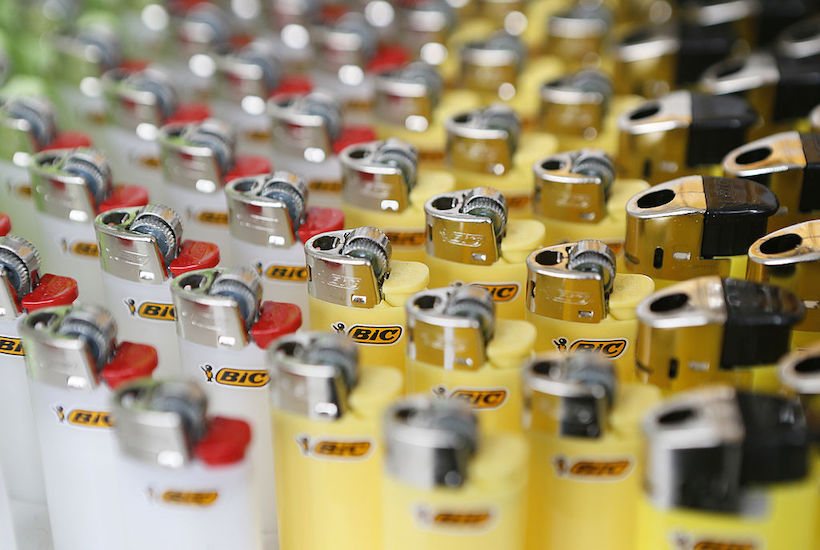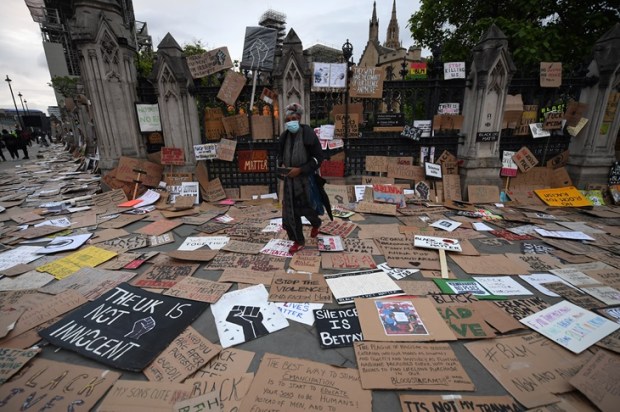Australian fire-lighters come in six colours – yellow, black, white, blood red, dark green, and light green. All are relevant to bushfires and forest management.
Yellow is the fire-lighter that has been with us forever. It is the yellow flash of lightning which has always ignited the Australian bush. We’re dreaming to think we can lock yellow fire out of parks, forests and heritage areas. But good forest management can reduce the ferocity and destruction of lightning-strike fires.
Black fire-lighters came with the first Australians. Without matches or tinderboxes they probably captured the fire genie from a lightning fire. Or they carried it here on clay hearths on the floor of their canoes. They valued this magic tool for warmth, cooking, insect control, vegetation clearing, animal trapping and fighting enemies. Some also learned how to light fires using heat generated by friction, but this was a slow laborious process and it was far easier to preserve and carry fire in a burning fire-stick. To keep these sticks alight or to light a new one as they travelled, nomadic parties on the plains and deserts renewed them periodically by setting fire to a clump of dry vegetation. Then they moved on. They lit fires for many reasons, anywhere at any time. They tried to keep out of the way of fires and were known to redirect mild grassland fires but never tried to put them out. This continual mosaic of small fires created the magnificent grasslands and open forests that Europeans admired when they first arrived. Aboriginal fire management followed no central plan, but it worked, making most lives and forests safer.
White fire-lighters were introduced by the next wave of settlers – the British, bringing matches, flints and tinderboxes. They marvelled at the grasslands and open forests they found. Soon the sheep and cattle of the squatters were flourishing on the fresh nutritious pastures of frequently burned land. They soon learned about bushfires as the yellow and black fire-lighters were still operating. The squatters soon learned two new skills to protect their pastures, flocks, herds, stock-yards, woolsheds and homesteads. Firstly, reduce fire loads and encourage new grass using cool season burning. And secondly, when faced with invading fires, fight fire with fire – back burn from station tracks, freshly burned bush or creeks towards the invading fire. We need to relearn these valuable lessons.
Blood red fire-lighters are carried by the fire vandals – the arsonists. And the greater the fire danger, and the more headlines it creates, the more active are these pyromaniacs.
Light green fire-lighters were developed in the 1960s and 1970s for professional foresters to protect forests with prescribed burning. These marvellous tools were banned by political fools, and are hard to procure today.
Finally, Australia was inflicted with the dark green” fire-lighter – an imported tool that almost never works. Deep Greens keep their lighters permanently in their pockets and never light anything except for token fires in small areas and to light tofu-burger barbecues or their pretentious Earth Day candles. Their attempt to lock out all fire creates a huge load of forest fuel, with dead wood, leaves, bark and weeds on the ground and vines and suckers between the trees. And neighbours living in fear of the inevitable fire-storm.
What should we do?
First, ban the defective dark green fire-lighters, throw the book at arsonists caught using blood red fire-lighters for thrills or malevolence, and learn to live with yellow lightning strike fires.
Second, mandate the use of the light green fire-lighter – an improved version of the black and white models used by Aboriginals and squatters. Use them to remove fuel load with cool season burning. And when fire comes, use them to fight fire with fire.
Give light green lighters to all practical foresters, landowners, fire wardens and local bushfire managers and they will safely abolish the dark green nightmare of massive wildfires.
With so much land burnt, now is the perfect time to make sure it does not happen again in those areas. Kick out the bureaucrats and the deep greens and put rangers, foresters, property owners and local fire wardens in charge.
Have a burn plan — and stick to it.
Viv Forbes has been an explorer, pastoralist and weather-watcher in Queensland and NT for most of his long life. He has lit fires (accidentally and deliberately), and he and his wife Judy have fought fires and had their camps, fences and pastures wiped out by fires. They were both members of a local bush fire brigade for over 25 years (Judy even had formal training). For most of that time they have watched Northern grasslands and open forests being invaded by eucalypt weeds. In their misguided youth they were infected with the green bug, never allowed grass fires on their property and encouraged eucalypt tree suckers and seedlings to spread (even foolishly built tree guards around some of these weeds.) They eventually learned that this greatly increased the risk of a major fire and degraded the grasslands. They were suddenly alarmed when the green state government (without warning or consultation) introduced vegetation protection orders on parts of their freehold property – that grassland was lost to the invading eucalypts and became a real fire hazard. From that moment on, they tried (unsuccessfully) to ensure that no seedling or sucker of eucalypt was allowed to reach adulthood on that property. “Stick to exotic trees – they can be removed if they becomes a nuisance.”
Got something to add? Join the discussion and comment below.
Got something to add? Join the discussion and comment below.
Get 10 issues for just $10
Subscribe to The Spectator Australia today for the next 10 magazine issues, plus full online access, for just $10.
You might disagree with half of it, but you’ll enjoy reading all of it. Try your first month for free, then just $2 a week for the remainder of your first year.


























Comments
Don't miss out
Join the conversation with other Spectator Australia readers. Subscribe to leave a comment.
SUBSCRIBEAlready a subscriber? Log in